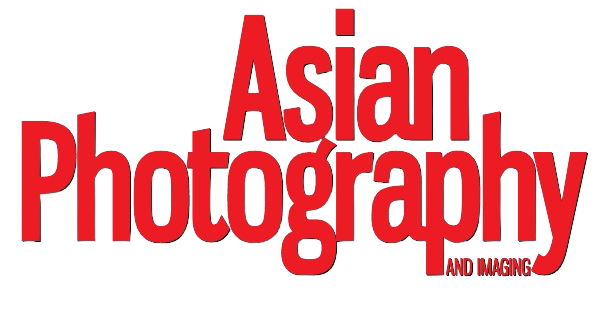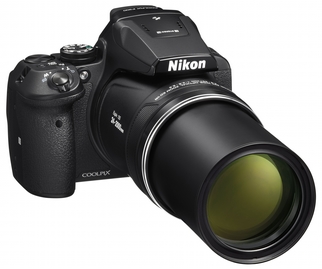Launched recently in the optical zoom range market, the P900 has an 83x ratio equating to 24-2000mmin 35mm terms. Nikon claims this allows you to see things not visible to the human eye – such as details on the surface of the moon. There’s also a digital zoom, which boosts that reach to 166x, or 4000mm. A major issue with long zooms is image blur at the longest end of the zoom range, as the effects of camera shake are exaggerated. Nikon’s solution is to include its latest Dual Detect Optical VR system, which it claims offers a 5-stop shutter speed advantage. We thought that it would be a great idea to put these things to test and see how the P900 performed.
Look Body and Feel
The P900 like the other previous bridge models features the same 1/2.3-inch, 16million-pixel sensor. That’s the same size sensor as in many compact cameras – and, despite appearances, we feel that reason the P900 is classed as a compact camera is because of the lens being fixed and not the camera size. The P900 features a good quality plastic body. The camera has a large rubberised grip, with a large thumb grip on the rear of the camera as well. The left-hand side also features a rubber grip.
You can easily hold the camera with your hands thanks to the apt size and weight of the camera. The majority of options are available on the menu button; the camera body, like a DSLR, has less buttons on the body which makes it easy to hold and use.
You can set the exposure compensation, focus mode, self-timer and flash options with the scroll wheel on the back, or customise the Function (fn) button to give access to other options such as the ISO setting, or drive move. There is a snapback zoom button on the left of the lens barrel, and the side zoom control can be used to change the zoom, or can be set to manual focus. The electronic viewfinder (EVF) is a decent size, bigger than some other compact cameras, but not as large as those found on mirrorless cameras. The front of the lens has a 67mm filter thread, which makes it possible to attach filters, although unfortunately the camera doesn’t come with a lens hood, or shade, and there aren’t any options to buy one on the website itself. The interface menus are clearly laid out, with options spread over five main screens, including a shooting menu, movie options, Wi-Fi options, location data options, and setup options. The screen is not a touch-screen; however, it does have good viewing angles, and shows a good resolution with clear results.
Performance
When it comes to producing rich and vibrant colours straight from the camera; the P900 does not disappoint you. The standard setting that the camera provides is apt for most of the shooting conditions and the vivid option in the camera helps you boost saturation although, if it’s not used with care, it can lead to slightly cyan skies in landscapes for an example. The Monochrome mode in the camera works apt but as there’s no way to revert to a full colour image if you change your mind later since there’s no camera RAW option; you need to be sure you want a black and white image before using it. You can also change the look of your images more dramatically by using the Effects mode, where you’ll find filter effects such as Cross Process and High-Contrast monochrome amongst all. Images taken at the longest optical zoom display a good amount of detail, and for those occasions when you need even more reach, shots taken using the digital zoom are also usable at small prints – but the 83x optical zoom offers such a high magnification that you may never need the digital zoom because the optical zoom covers it all. The P900 also performs well at shorter focal lengths. At normal focal lengths the images are pretty sharp and vibrant in colours. If you zoom in on the higher focal length images you’ll realise that the images are soft on the edges. It’s also worth pointing out that it’s only at the very widest focal length can you use the maximum f/2.8 aperture setting: as soon as you zoom a little, the maximum available aperture decreases to 4-5.6.Not all the aspects of the P900’s operations are as fast – for instance, the playback can take a second or two to respond, leaving you wondering if it’s working at all. On the plus side, making your way through menus is generally quicksand intuitive.
Conclusion
Clearly the big selling point of the P900 is its 83x zoom. It’s currently the market leader in this respect, but how long it retains that distinction remains to be seen. The downside of having such a huge optical zoom is that the camera needs to be large. The P900 is pretty much the same size as a DSLR with a kit lens attached. Although it’s great to have the option full manual control, and a range of exposure modes, it seems a little remiss of Nikon to not include raw format shooting – it’s something which appeals to enthusiasts.
Look, body and feel rating – 3 1/2 *
If you’re after a camera with a huge zoom range you can’t get bigger than this, for now at least. Images taken in good light look great, with vibrant colours. Having the option of full manual control is also helpful.
Performance rating – 4 *
It could be a small audience, but those looking for an ultra-zoom bridge camera should find the P900 very capable, especially if they don’t mind only being able to shoot JPEGs. The P900 is inexpensive purchase, but the price is likely to come down, and it has the longest zoom range of any camera currently on the market.
Overall Rating – 4 *
It could be a small audience, but those looking for an ultra-zoom bridge camera should find the P900 very capable, especially if they don’t mind only being able to shoot JPEGs. The P900 is an expensive purchase, but the price is likely to come down, and it has the

